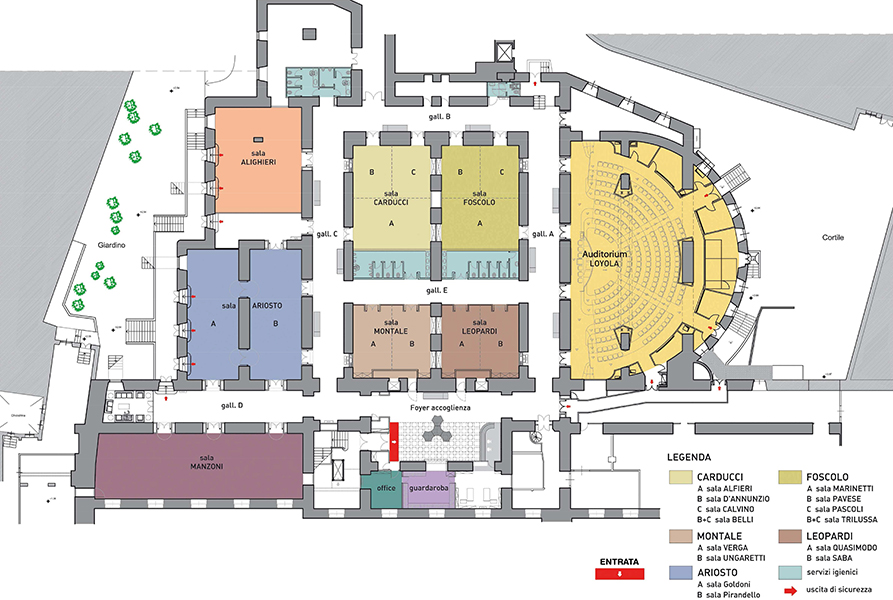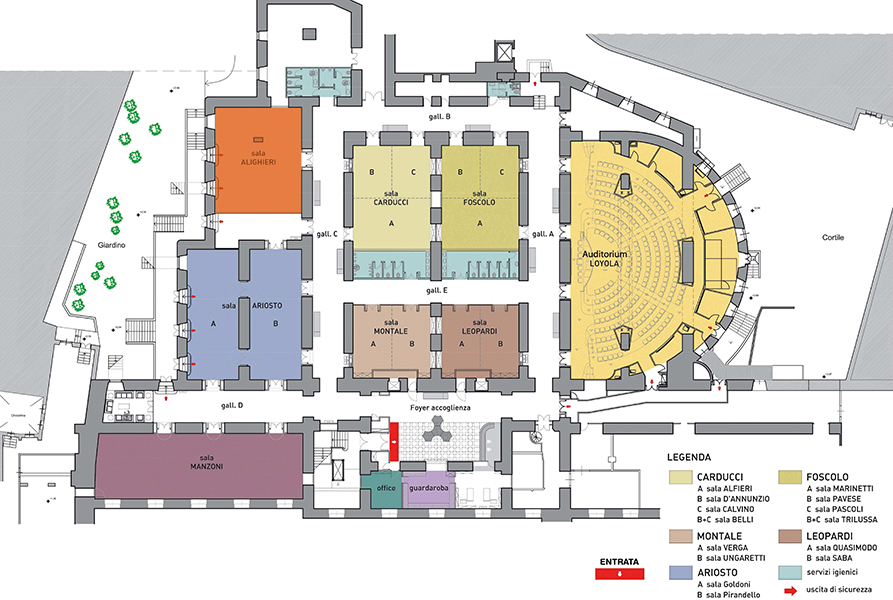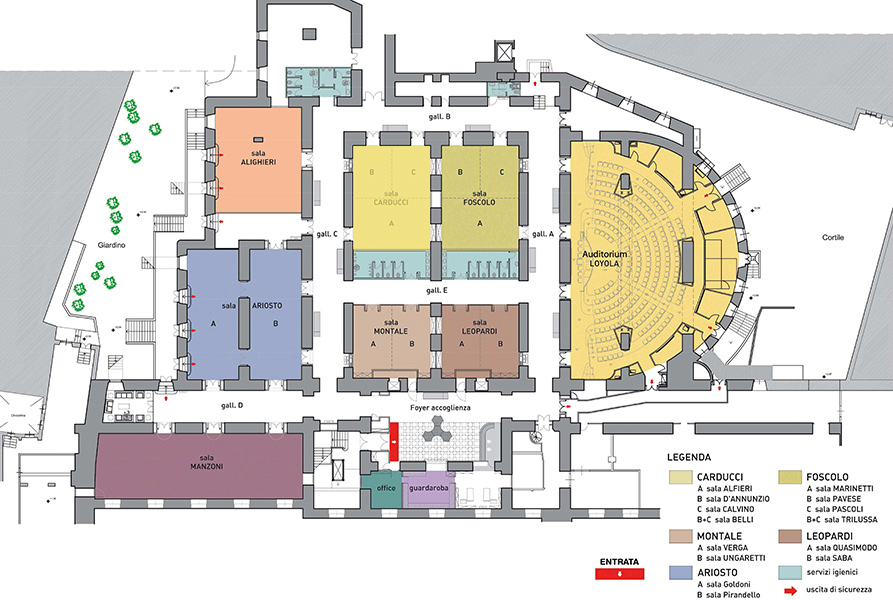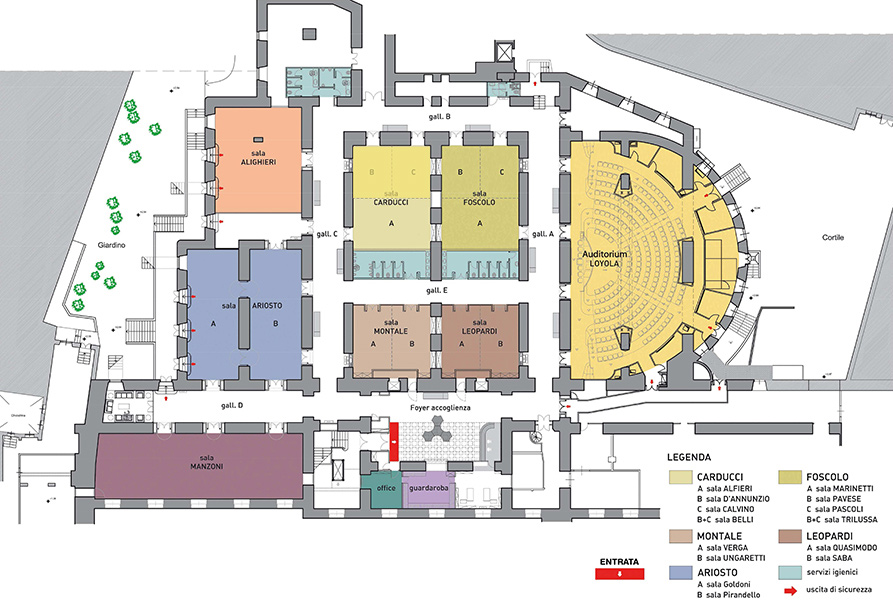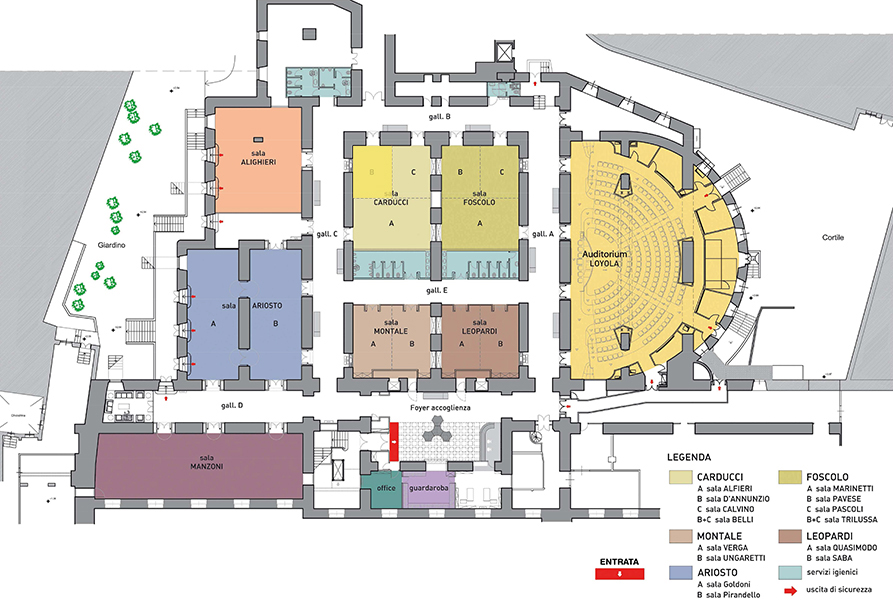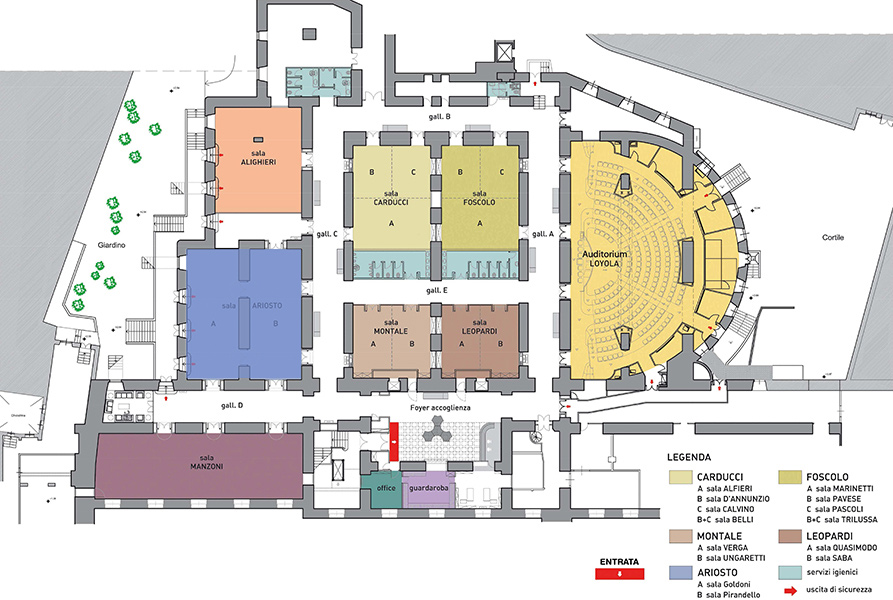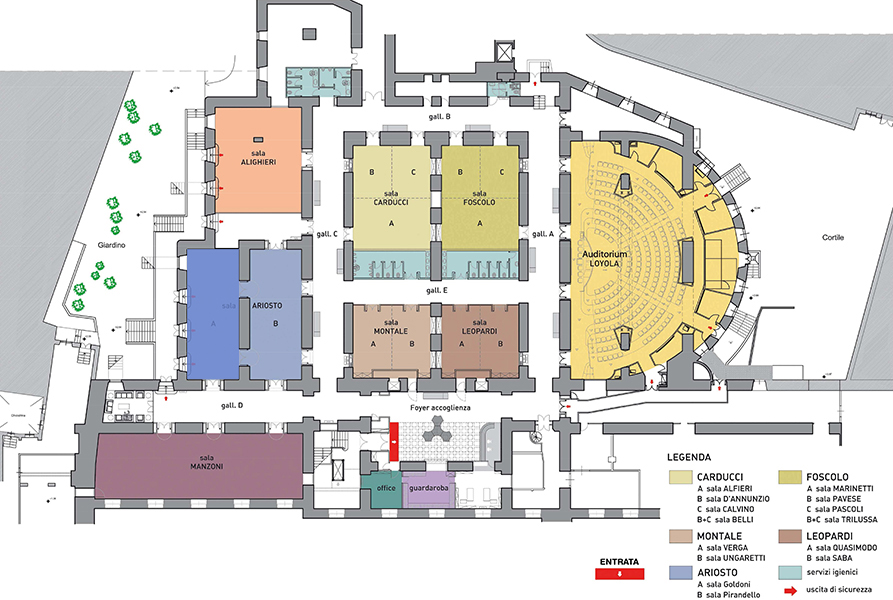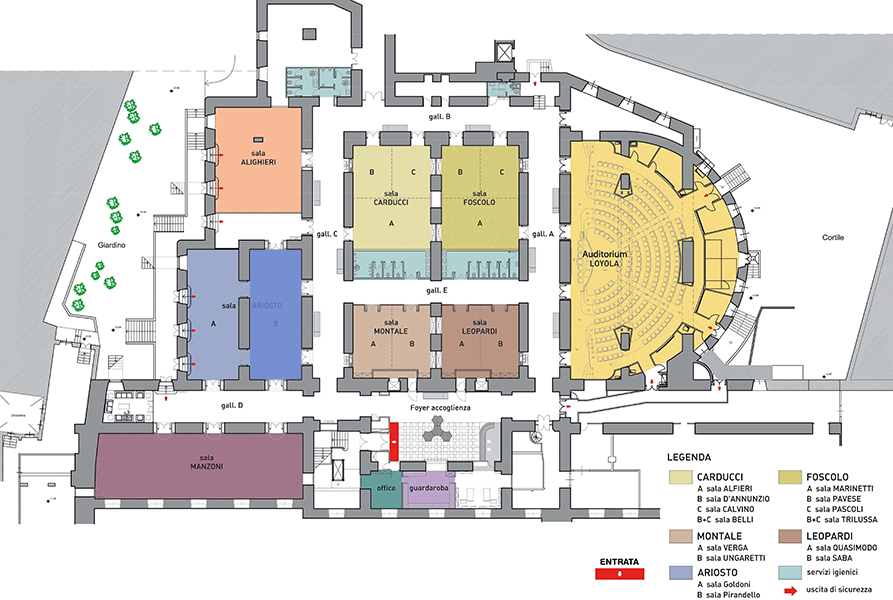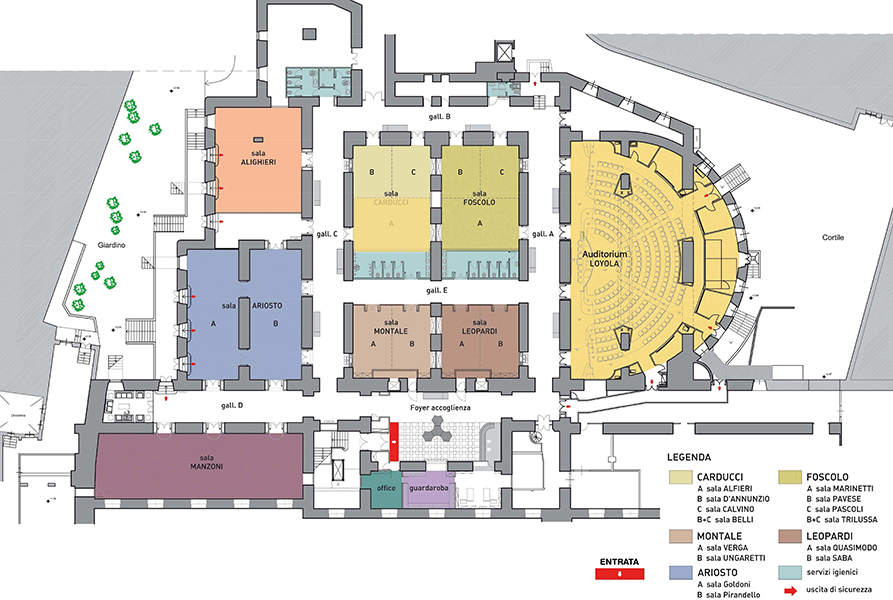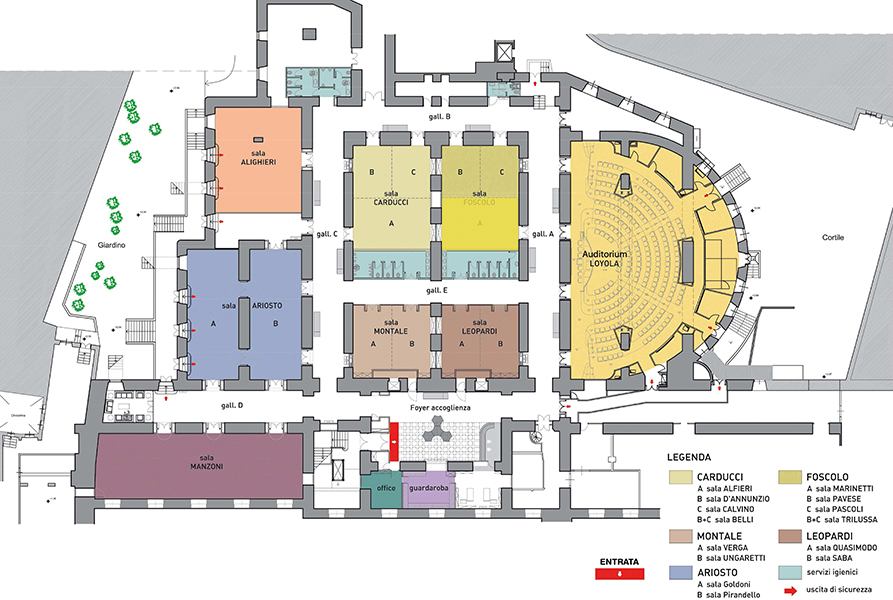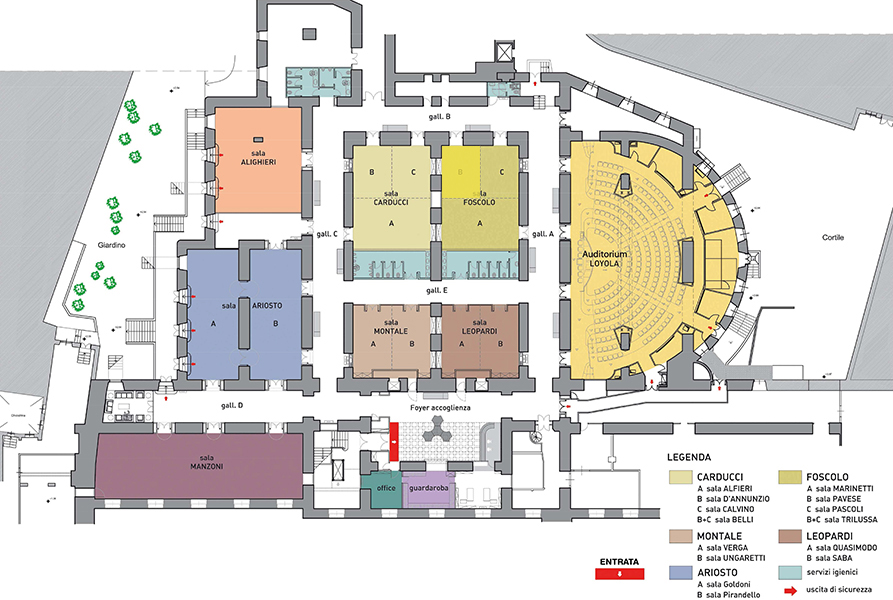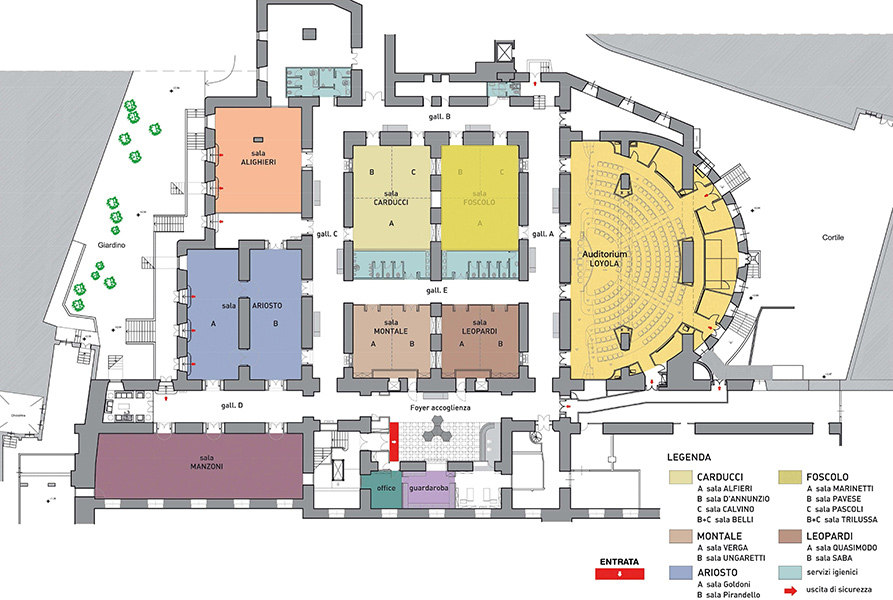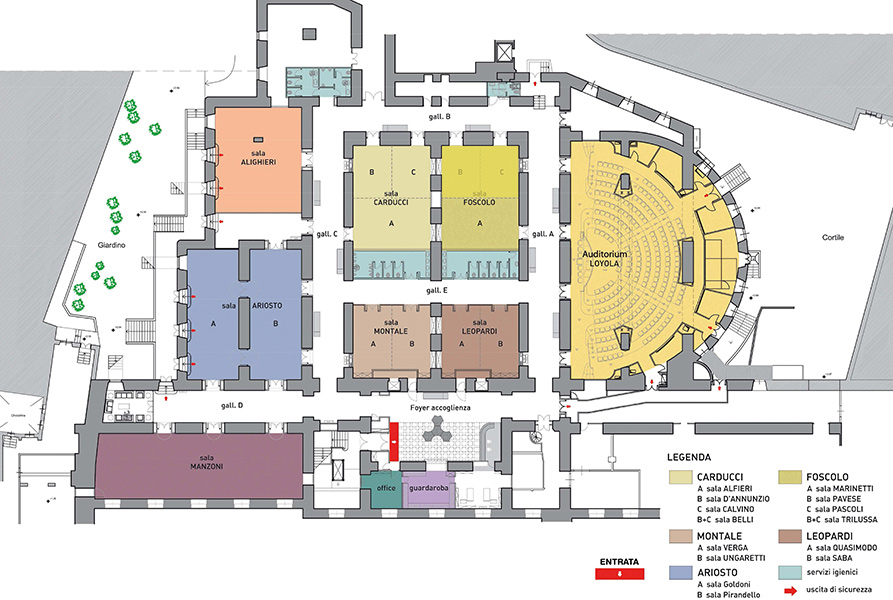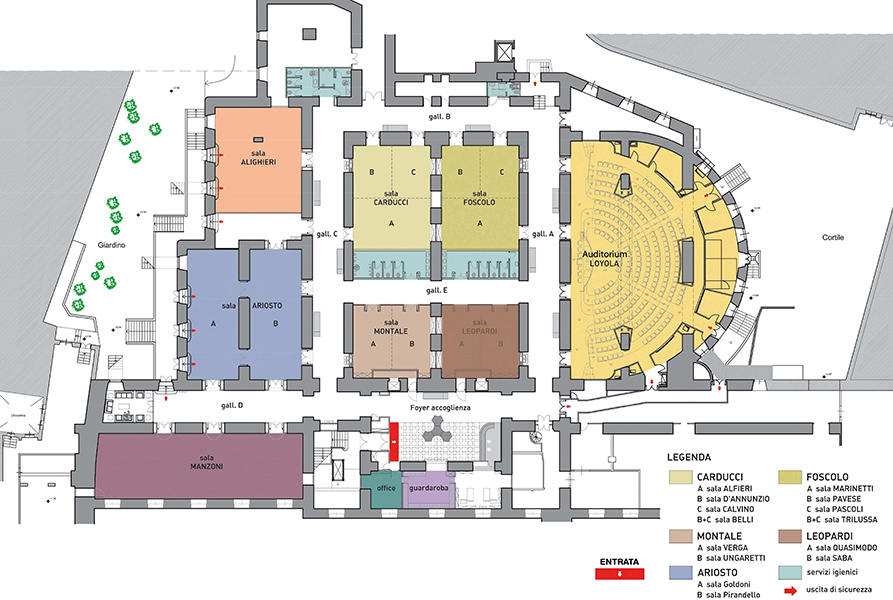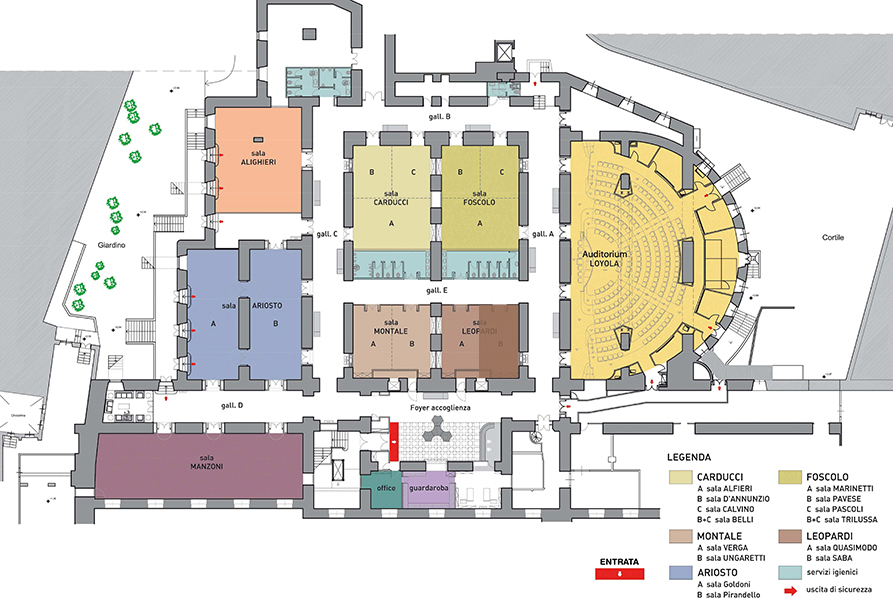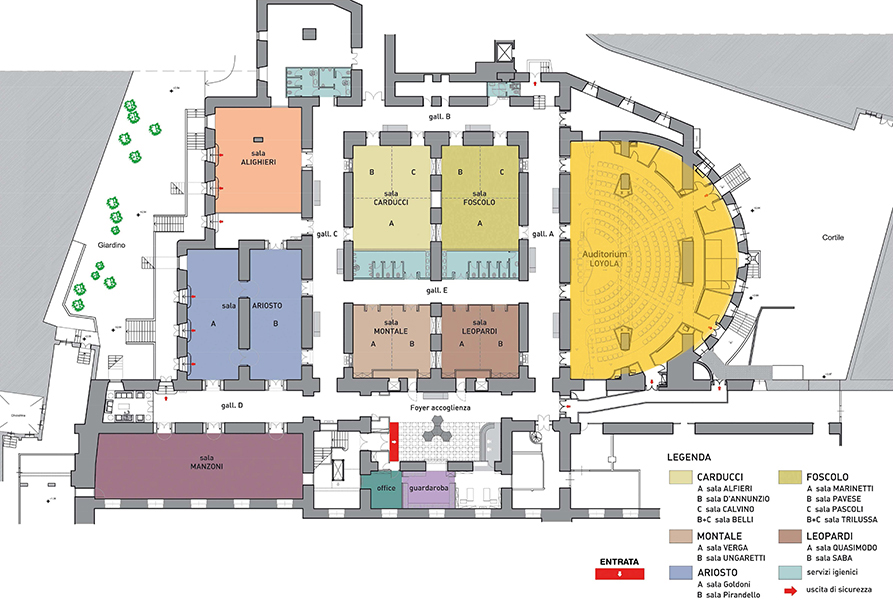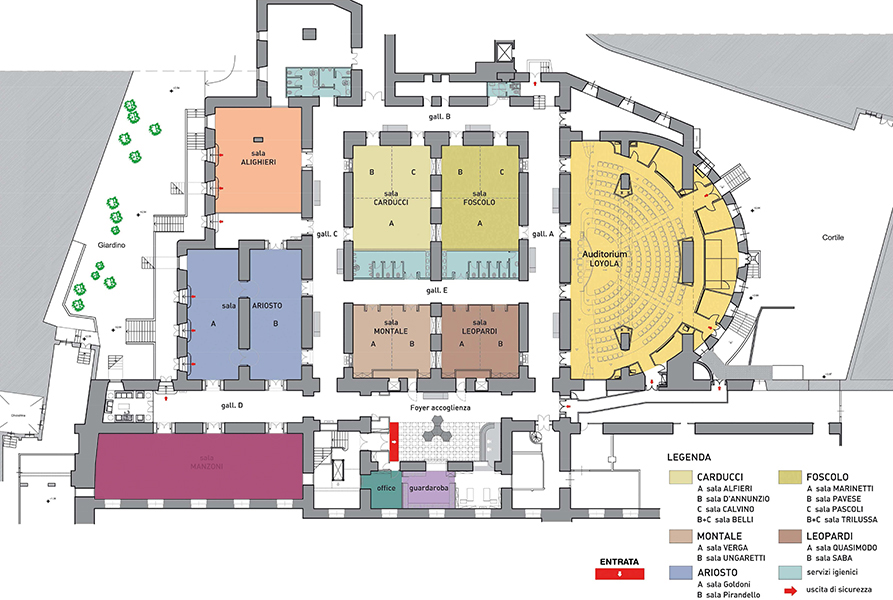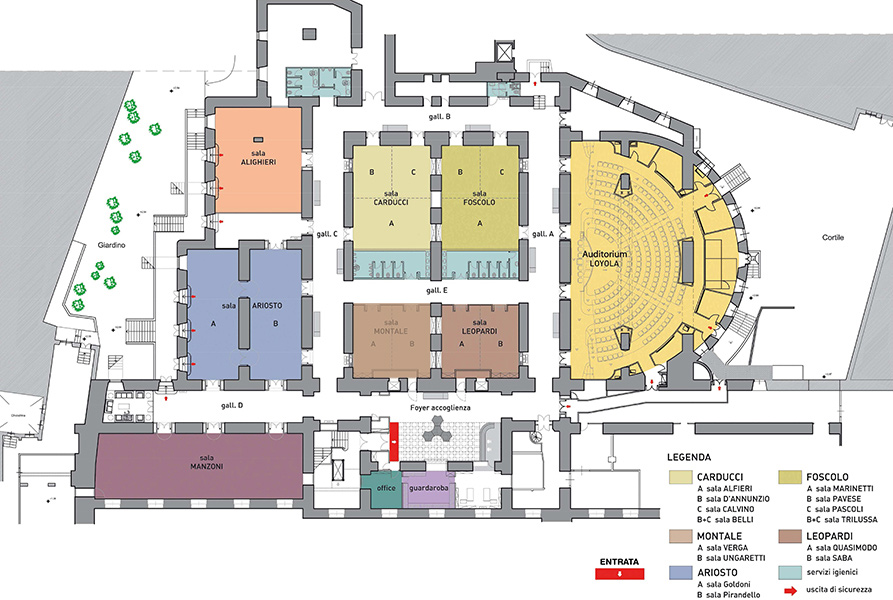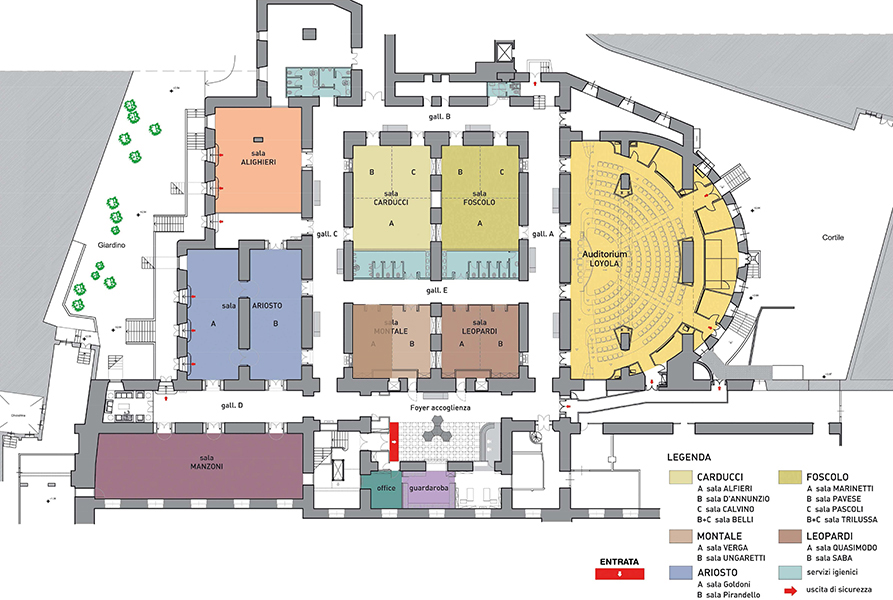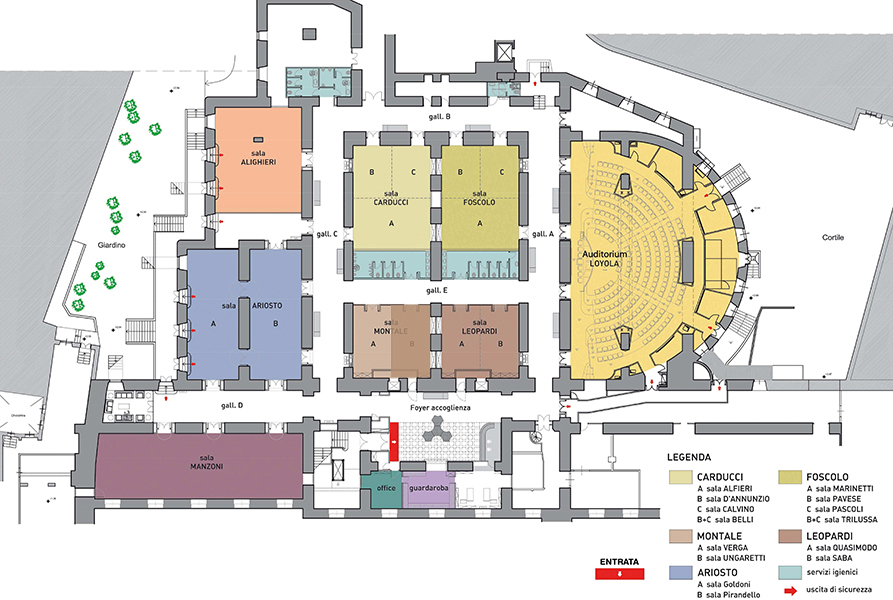Conference centre - History
Situated in the heart of Rome, the Centro Congressi Roma Eventi - Fontana di Trevi is located inside the splendid building that hosts the Pontifical Gregorian University and the library of the same name with its exceptional collection of precious books. Founded in 1551 by Ignazio Loyola, the “School of grammar, humanity and Christian doctrine” found its permanent home here, after having been moved around Rome. As early as 1581, Pope Gregory XIII was committed to finding a suitable home for the School and he commissioned the architect Bartolomeo Ammannati to construct the great building, which was inaugurated on 28 October 1584. For this reason, the pope was hailed as the “founder and father” of the Roman College that took the name of Gregorian University. In 1873, however, the building was confiscated by the Italian Government, forcing the university to be divided. After the First World War, there was once again strong interest in providing the University with a new and permanent residence.
In 1919 Pope Pius XI, continuing on the path of his predecessor Benedict XV, decreed the purchase of several buildings and plots of land in Piazza della Pilotta, at the foot of the Quirinal Hill, with the intention of building a new location for the University there, close to the other Roman university entrusted to the Jesuits, the Pontifical Biblical Institute. The name of the square alluded to the “game of pilotta”, a ball game brought to Rome by the Florentines following the Sack of Rome in 1527, that consisted of hitting the ball with a fist or with a type of ladle. Thanks to Giulio Barluzzi's design, the University was built on an area previously occupied by several sixteenth-century convents (used until 1800 as barracks for the papal dragoons) and by the Casino di Villa Colonna building, especially demolished for the occasion. Beneath the rubble, some of the ruins of the ancient Temple of Serapis were found, a temple built by Caracalla in the 3rd century AD. On 27 December 1924, during the centenary of the restoration of the Society of Jesus, the first stone of the new complex was laid. Its building was completed three years later and it was inaugurated on 6 November 1930.





